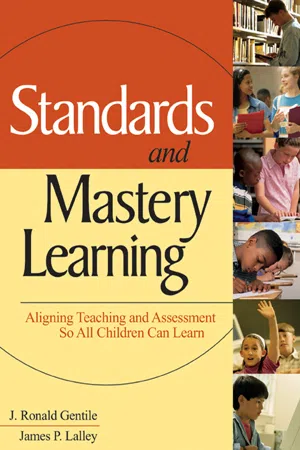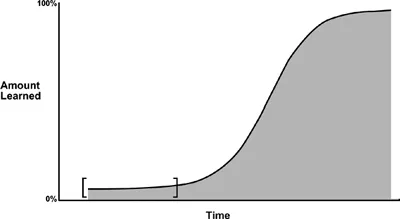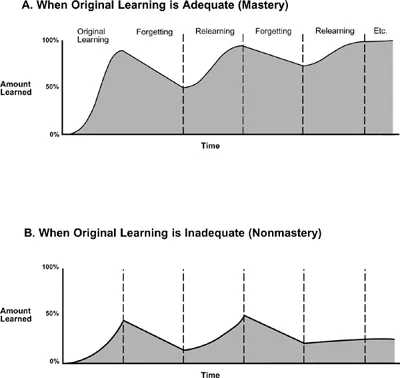
eBook - ePub
Standards and Mastery Learning
Aligning Teaching and Assessment So All Children Can Learn
This is a test
- 208 pages
- English
- ePUB (mobile friendly)
- Available on iOS & Android
eBook - ePub
Standards and Mastery Learning
Aligning Teaching and Assessment So All Children Can Learn
Book details
Book preview
Table of contents
Citations
About This Book
** Consider using the Robert Marzano and RoseAnn Vojtek quote instead of marketing copy.**
This ideal book enables educators to help students attain self-efficacy and the ability to achieve new ways of learning. It examines national and state standards and shows how to attain them through mastery learning.
Frequently asked questions
At the moment all of our mobile-responsive ePub books are available to download via the app. Most of our PDFs are also available to download and we're working on making the final remaining ones downloadable now. Learn more here.
Both plans give you full access to the library and all of Perlego’s features. The only differences are the price and subscription period: With the annual plan you’ll save around 30% compared to 12 months on the monthly plan.
We are an online textbook subscription service, where you can get access to an entire online library for less than the price of a single book per month. With over 1 million books across 1000+ topics, we’ve got you covered! Learn more here.
Look out for the read-aloud symbol on your next book to see if you can listen to it. The read-aloud tool reads text aloud for you, highlighting the text as it is being read. You can pause it, speed it up and slow it down. Learn more here.
Yes, you can access Standards and Mastery Learning by J. Ronald Gentile, James P. Lalley in PDF and/or ePUB format, as well as other popular books in Education & Education Curricula. We have over one million books available in our catalogue for you to explore.
Information

1
Understanding Mastery Learning
The movement toward higher academic standards for our children carries with it a number of implications, some explicit, some implied:
• That there is some consensus on our academic goals and priorities
• That those goals are both explicable and measurable
• That we can validly differentiate between truly competent, incompetent, or incomplete achievement in those academic domains
• That we have the resources and the will to remediate and motivate those who are initially unprepared for, or slow to grasp, one or more of those academic goals
• That in attaining those new higher standards, we model fair and equitable procedures
It is our thesis that all the above points are intimately connected to mastery learning (and criterion-referenced assessment). Indeed, the standards for each of the professional disciplines are amply stocked with phrases such as “All children can learn,” “Aim for mastery,” and “Students should be able to demonstrate competent levels of achievement.”
The problem is that although the connection between teaching to standards and mastery learning is logical and natural, only a small proportion of teachers and schools have adopted mastery learning. Moreover, many of those who claim to be using mastery learning make one or more of the following common, often fatal, mistakes: (a) Passing a mastery test is conceptualized as the endpoint instead of the initial stage of the learning/memory process; (b) there is no requirement and concomitant grading incentive to go beyond initial mastery; (c) mastery testing is embedded in an overall grading scheme (often a leftover norm-referenced and competitive scheme) that contradicts the goal of achieving mastery by all (a criterion-referenced purpose); (d) demonstrations of mastery are limited to objective tests at the knowledge/recall end of the thinking continuum (e.g., Bloom’s 1956 taxonomy); and therefore (e) students are overtested and underchallenged.
The above errors are common, we believe, because educators tend to think of mastery learning as a teaching technique or a testing procedure, instead of a philosophy or theory that provides the basis for decisions about techniques or assessments. Furthermore, they do not understand the theoretical and empirical bases on which mastery learning is founded.
It is our purpose in this introductory chapter to briefly describe each of the following foundations for mastery learning: the learning/memory base, the measurement base, the theoretical bases (including competency vs. helplessness, Erikson’s social development theory, and Carroll’s model), the brain base, and the empirical base. The accumulated weight of these positions will lead us to some conclusions about teaching, assessment, and grading. These, in turn, will be directly relevant to the standards movement of our time and why these new standards will fail if we do not take heed of the lessons from mastery learning.
The Learning/Memory Base
Consider a learning task: memorizing multiplication facts or vocabulary; acquiring a skill, such as playing a piece on the piano or hitting a tennis ball with topspin; comprehending a paragraph or theory; or learning a new teaching technique or thinking strategy. Each of these, from the simplest to the most complex, has a number of essential prerequisites—that is, some prior knowledge that if previously acquired and currently activated can facilitate achievement of the task at hand. For multiplication facts, two likely essentials are one-to-one correspondence for rational counting, and skill with addition. For thinking strategies, metacognitive skills (such as the ability to actively monitor what you comprehend and what you don’t) and the ability to organize and categorize are likely prerequisites. If such prior knowledge or skill is absent, then the learning task is more difficult. And to complete the scenario, if the prerequisite knowledge has been mislearned or is otherwise inaccurate, acquisition of the new task is further confounded with the need to unlearn prior misconceptions.
Figure 1.1 The S-Shaped Learning Curve


Teachers acknowledge the differences in prior learning among their charges in regard to their readiness. We speak of Mary, who has great facility for foreign languages, or Bill, who is not yet ready to read. In the terminology of the famous S-shaped learning curve (see Figure 1.1), readiness is manifested in how long the line is before any progress or acceleration can be observed. Students like Mary, who have mastered prerequisites, may show immediate progress, whereas students like Bill may need hours or days trying to figure out what the task is or to acquire the prerequisites, and thus remain in the bracketed part of the curve for an extended period.
Learning, in other words, occurs in phases or episodes, and this original learning phase includes (a) the readiness component (described above), (b) learning to initial mastery, and (c) forgetting. Although forgetting has not been mentioned up to now, it is clear that forgetting is the inevitable result of initial learning, even when a high mastery standard of, say, 80% to 100% correct is required. When the degree of original learning is less than mastery, say, 60% to 80%, then forgetting is likely to occur more rapidly or be more complete. If it is less than 60%, it is questionable to speak of forgetting at all, because learning was inadequate in the first place.1
Students show that they understand this principle implicitly when they ask, “Why do we have to learn this stuff anyway? We’ll only forget it.” Our typical answers, “Because it will be on the test” or “Because I said so,” are not satisfactory. In fact, we have been able to find only one satisfactory answer to the question, and it was supplied in one of the first empirical studies of learning/forgetting (Ebbinghaus, 1885/1964). The answer is that relearning is faster—that is, there is a considerable savings of time in relearning compared with original learning. Furthermore, there is a positive relationship between amount of time saved in relearning and the degree of original learning, with essentially no savings when original learning is below some acceptable threshold (which we earlier argued was 60% or less).
If original acquisition and forgetting constitute Phase 1 of learning, then each new relearning and forgetting episode constitutes an additional phase. In addition, for material or skills that were mastered in Phase 1, each new relearning episode constitutes additional amounts of overlearning, defined as practice beyond initial learning, which is inversely related to forgetting.
Each new relearning-forgetting phase also provides the opportunity for distributed practice—that is, rehearsal of the material over hours, days, and weeks. When compared with massed practice (i.e., cramming, or including the same number of learning episodes into one session), the positive effects of distributed practice on memory are widely known, as advertised by teachers and coaches when they say, “Practice a little each day.” From a cognitive constructivist point of view, distributed practice also provides experience retrieving previously stored material, comparing new examples with those stored, reorganizing what is known, and recoding it for memory storage and subsequent accessibility.
Although the above material has been widely known for decades and documented in many basic learning as well as educational psychology texts,2 it is not usually considered in the context of mastery learning. And yet the implications are straightforward and powerful, as both a positive and a negative example will portray.
For the positive example, consider the experience we teachers have. The first year of teaching a unit, we have a lot to learn (even though many prerequisites have already been mastered in college and student teaching). The next year, when we reach that unit again, we find we’ve forgotten quite a bit. Fortunately, relearning is faster, and we find ourselves reorganizing the material, coming up with new examples, and so forth. The next year, forgetting has been less yet, and thus there is greater savings in relearning. By the 10th year, the material is almost totally recalled, with examples virtually falling off the tongue. The material seems so easy by this time that many teachers can now be heard complaining, “The students are getting dumber and dumber every year.” Sadly, this is one of the negative effects of becoming expert in something: We lose empathy for the novice. (Note the parallel to what happens once a nonconserver on Piaget’s tasks becomes a conserver: e.g., the 8-year-old who understands that the amount of water does not change when poured into a taller, thinner glass cannot recall that she expected more in the taller, thinner glass when she was 5). This is also what distinguishes a mere expert from a teacher: An expert can do it; a teacher can do it but also remembers what it takes to progress from novice to expert.
For the negative example of how these learning/memory concepts form the basis for mastery learning, consider some students whose original learning is 50% or less. Their forgetting in Phase 1 will be at least as rapid as it will for those who mastered the material and, because they learned so little, more complete. Furthermore, there will be little or no savings in relearning during Phase 2. Then, if this material is treated as a review ("This was covered last year"), less time will be spent on relearning (and after all, students who mastered originally will need less time). Thus the relearning episode for those who need it most will also be substandard, leading to relatively little residue in memory and therefore little or no savings for Phase 3 relearning. By Phase 3, the motivation to learn this material will also be eroding ("I was never very good at this"), an issue we shall explore in more detail in “Learned Helplessness.”
A summary of the long-term effects of the difference between mastery and nonmastery at original learning is provided in Figure 1.2. After four or five episodes, when learners in Part A say to those in Part B, “I forgot more than you ever learned,” the sad fact will be that they are telling the truth. A close look at the curve in Part B shows that after four or five episodes, those persons—they can hardly be called learners—have learning/forgetting curves that resemble the brain waves of comatose patients.
The Measurement Base
Since at least Glaser’s (1963; Glaser & Nitko, 1971) publications, the field of educational measurement has acknowledged the importance of the distinction between norm-referenced (NR) and criterion-referenced (CR) assessment. Whereas NR assessment is used to refer to the traditional psychometric approach of measuring and comparing individual differences in relation to norms provided by others, CR assessment interprets a student’s score in relation to the goals and criteria of instruction without regard to other students’ scores.
Figure 1.2 Hypothetical Learning/Forgetting Curves for Mastery Versus Nonmastery


NR assessment, therefore, is useful for obtaining rank in class, for estimating a person’s status in relation to some normative group, and for selecting the most qualified people from a long list of hopefuls (for awards, for graduate school, etc.). CR assessment, in contrast, is useful for measuring how skillful a person is in relation to a particular instructional domain, what growth a person has demonstrated over time, and what else the person needs to attain specified instructional goals. In Bloom’s (1976) succinct contrast, it is a difference between selecting talent and developing talent.
For NR purposes, students take a test or perform a skill and are scored relative to one another or to appropriate norms. The absolute score is not important and is usually not even meaningful, for at least the following reasons. First, the domain being tested is not usually clearly specified and does not have to be. To rank people on IQ or math aptitude, for example, it is best to write items that sample from many areas, not just vocabulary or exponents. Second, to maximize reliability of measurement, each item selected for the test should be missed by about 50% of the examinees; this maximizes the range of the test scores and creates a normal curve. Scores on the test, therefore, are not interpretable, except in relation to the norms; for example, hearing that your child scored 430 on the SAT verbal test tells you nothing about what questions he or she could answer, and indeed, this information needs to be accompanied by statistics such as percentile rank (e.g., 38th percentile) to have any meaning.
Finally, to demonstrate reliability or predictive validity of an NR test, one must show that people stay in approximately the same rank order year to year or test to test. This is independent of absolute score, because the entire population can grow in height, knowledge, or skill, as they do in physical stature, and still the individuals would stay in approximately the same position relative to each other. A prime example of that is, of course, that the top third of readers in first grade are likely also to remain in the top third by fourth grade, whether the whole school improves or not in those 3 years.
For CR purposes, the contrasts with the above are striking. The individual’s score is important in and of itself because it is intended to be a measure of level of knowledge or skill. First, it makes sense to speak of being a novice or an expert only in some domain, so the domain of the skills must be specified explicitly. Test items or performances must therefore be congruent with instructional goals, making those assessments domain referenced (Hively, 1974; Nitko, 1980; Popham, 1978).
Second, for reliability and validity of measurement, we do not want items to fool half the people all the time. Perhaps we want all the students to fail the test before instruction and all of them to pass after instruction—a measure called “instructional sensitivity” (Haladyna & Roid, 1981), but that’s the closest we would want items with difficulty of .5. Because effective instruction should help—indeed, require—students to be achieving at 80% correct or higher on tests, then typical NR measures of reliability and validity will be underestimates. A psychometrically appropriate CR assessment is completed via a standard decision table, such as Table 1.1. This is because decisions about mastery, like medical diagnoses, fall into one of the following...
Table of contents
- Cover Page
- Title Page
- Copyright
- Contents
- Preface
- About the Authors
- 1. Understanding Mastery Learning
- 2. Examining the Standards: Math, Science, Social Studies, and English Language Arts
- 3. Planning Standards-Based Lessons Using Mastery Learning
- 4. Implementing Standards and Mastery Learning in the Classroom
- 5. Professional Development and Mastery Learning
- Appendix: What Does the Literature Tell Us?
- Glossary
- References
- Author Index
- Subject Index